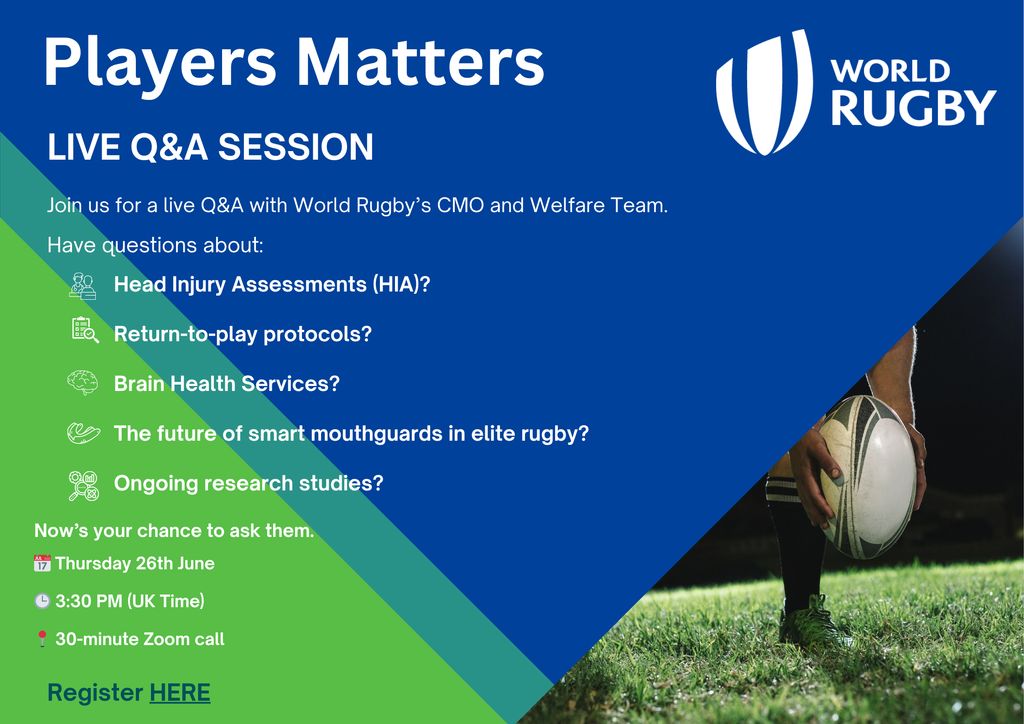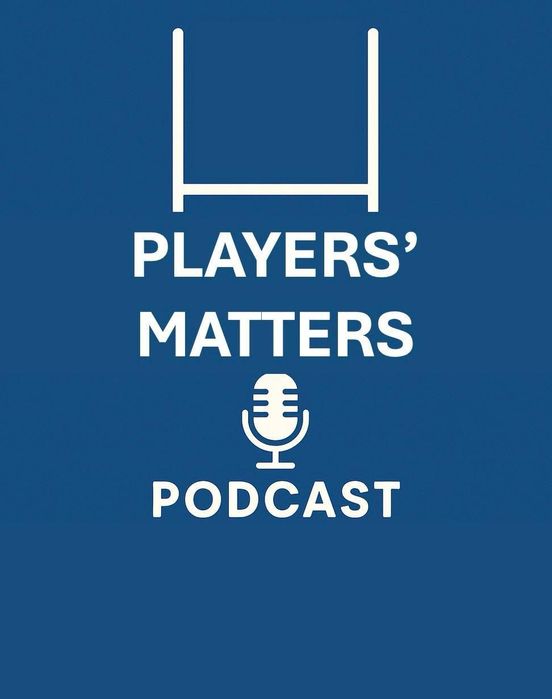Players Matters - June 2025

A commitment to two-way communication
Welcome to the latest edition of Players Matters. This newsletter exists to keep our stakeholders informed and up to date on our player welfare initiatives. We hope it has created more awareness, and supports and empowers those of you involved in player welfare, no matter your role.
We recently held our annual Player Welfare Strategy meeting, and one of the things that emerged, not for the first time, is the need for stronger, more regular communication. Whether it’s the HIA process, the integration of the IMG in the elite game, return to play after injury, general injury management, our heat policy or the Brain Health services (more on this below), we constantly remark among our team that we need to do better at communicating to educate, inform, motivate and engage.
One way that we think we can do this better is to invite more dialogue and discussion. In that light, this Players Matter newsletter is a first – it is the first such letter that invites you to an open Q&A session to follow on from this newsletter. In that Q&A, I invite you all to join a Zoom call with any questions you may have about what is discussed in this newsletter.
The session will last 30 min, and the very first one will happen on Thursday 26 at 3.30pm UK time. You can register for the zoom call at below link
https://worldrugby.zoom.us/meeting/register/QdnGRqM5S8uvNFbn-feSYA
Afterwards, it will be available as both a video and audio file for anyone to view or listen to. I hope that this gives you a chance to ask questions that are important to you, to clarify anything from these newsletters, and generally to build a better engagement with us as we try to ramp up our collective player welfare efforts.

A Year On: World Rugby’s Brain Health Service
June 2025 marks one year since the launch of the World Rugby Brain Health Service, an initiative focused on educating current and retired players on how to take control of their brain health. Launched in mid-2024, the Brain Health Service (BHS) is the first sport-specific brain health platform designed to provide a dedicated platform where players can go to screen for potential brain health issues and access support if needed.
The service has now launched in Ireland, Australia, Wales, South Africa, and New Zealand, with more than 150 former players registering to date. Of those, over 80 have completed the in-depth screening process, which includes psychological assessments, cognitive tests, and a follow-up with the player’s GP.
A major milestone was the 2025 launch in South Africa, followed closely by New Zealand, where a two-phase rollout is underway to ensure the service is culturally appropriate for each country’s multi-cultural playing population.
How the Service Works
The Brain Health Service is a three-step process:
- Self-Assessment: Players complete a comprehensive online questionnaire about subjects including their medical, sports, and mental health history.
- Cognitive Testing: Delivered via telehealth, players perform 11 thinking and memory tests, under the guidance of a trained Brain Health Practitioner (BHP). The test battery lasts about 30 minutes
- Follow-Up: Results are reviewed by our clinical technical manager who reccomds the need for referral. The player’s GP is ultimately responsible for further determining the need for referral.
The service also provides educational resources highlighting the 14 identified modifiable risk factors for dementia and helping players take proactive steps toward healthier lifestyles.
Over the first year, we’ve gained valuable insight into how players engage with the Brain Health Service and where enhancements are needed. An important finding has been a higher-than-expected drop-off between sign-up and questionnaire completion, with 36% of players not progressing through the full assessment journey after completing registration.
In response, we’re focusing on improving platform usability, making several adjustments to streamline the experience. We are also engaging directly with players to better understand the reasons behind the drop-off, while union administrators continue to play an active role in encouraging and supporting participants to complete their assessments.
Additionally, the need for clearer, more accessible educational materials has become evident. We are developing a broader suite of resources for 2025, including infographics, short videos, and podcasts. These will focus in particular on the 14 modifiable risk factors for dementia, helping players understand how small lifestyle changes can significantly improve long-term brain health. Once players have completed the screening, the system identifies specific modifiable risk factors that are most relevant to them. These individualised risk factors are then highlighted to each player and their GP, empowering them to take targeted steps to improve their brain health. In addition, both players and the general public will have access to educational materials on these risk factors through the Brain Health Service website, helping to raise broader awareness and promote proactive brain health management.
Overall, we are encouraged by the outcomes in the first year, and will continue expanding the Brain Health Service globally, with further union rollouts planned later this year. A key focus for the remainder of 2025 will be translating the platform into additional languages to ensure broader accessibility and inclusivity across regions.
Our commitment to expansion is amplified by the early results - of the players who have fully completed the Brain Health Service to date, 22% have been referred to a cognitive specialist and 17% to a psychological specialist for further evaluation and support. These referrals ensure that individuals showing signs of potential concern are connected with the appropriate medical professionals for further testing or intervention. It is reassuring to know that these players are now receiving the attention they may need—care that might otherwise My have been delayed or overlooked.
As we move forward, we will continue to track the statistics because they’ll shape both the nature and scale of the specific support we provide to players. We did expect the early engagement to come from players who are experiencing concerns, and as participation widens over the next six months, we will prioritize tracking whether this changes the proportion of players who are referred on for specialist evaluation and support, before considering further changes to the pathway.
Overall, it has been a promising first year, with plenty to build on, and we want to encourage all of you reading this to spread the word, promote the service to players, current and retired, so that we build the best possible support system for them.
On the horizon: Rugby World Cup and Welfare
The Women’s Rugby World Cup kicks off on 22 August. It will be the biggest edition yet, and that’s true also of our supporting player welfare initiatives. For instance, it will be the first World Cup using instrumented mouthguards as part of the HIA to support concussion management and the identification of significant head impacts.
There is also a strong focus on mental health in the build-up to, and during, the tournament. We launch an online mental health module through the tournament, before global release, as well as a player peer mental health support system in which Player Development Managers and Ex-Internationals are trained up in peer support skills, with these individuals being available to teams throughout the tournament.
As the international window opens, attention turns to national colours and historic rivalries — not least the return of the British and Irish Lions in Australia. But the global club game will be back before long, and with it, our continued focus on supporting player welfare through consistent application of injury management protocols, the global law trials, and the use of IMGs. We’ll be watching closely, working with all stakeholders to ensure progress continues on and off the field, and we hope that many of you will take up the opportunity to join the Q&A and open up dialogue in support of player welfare.
Thank you for reading.
Prof Éanna Falvey





